Reviews
What I’m Looking At: Museum-Quality Malcolm Morley, Borna Sammak’s Beautiful Scenesters, and More
Highlights from New York galleries from the last few weeks.
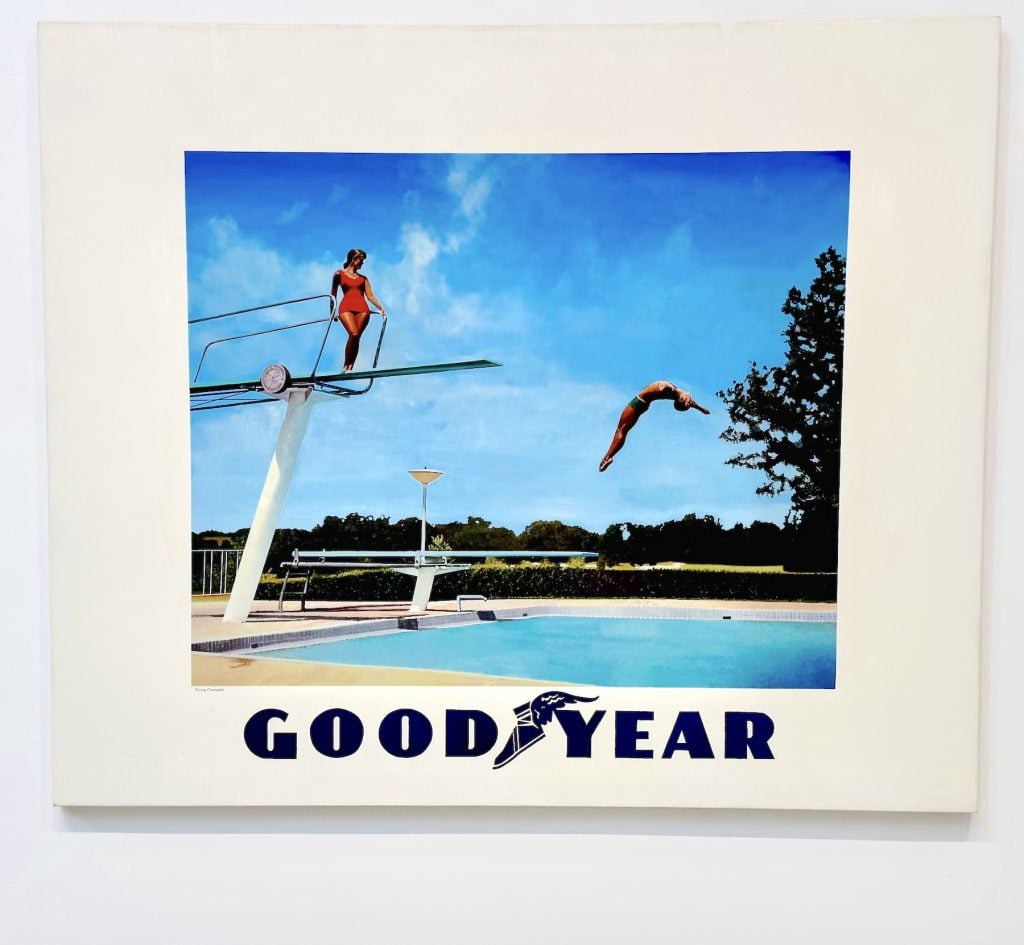
Highlights from New York galleries from the last few weeks.

Ben Davis

“What I’m Looking At” a column where I digest art worth seeing, and whatever else is on my mind. Below, thoughts on what’s in the galleries in New York, July 2024.
Malcolm Morley, “Painting as Model” at Petzel
This show is “museum-quality” in the sense that it feels like a museum could have staged it, and also in the sense that museums including the MoMA and the Met have lent major paintings by the late British-American artist to this 32-work extravaganza, as if to sheepishly admit that they should have (Morley had a retrospective at the Brooklyn Museum back in 1984, the same year he won the Turner Prize). Different galleries look at Morley’s creative zigzags, and though I know him best as a photorealist, it hits home how his photorealism is just a part of his larger, very disciplined, very lively interest in exploring all the ways that a painted image can relate to reality. A late-period work like Monster Energy (2007) simultaneously looks vividly photographic and looks like no photo you have seen. Exquisitely entertaining.
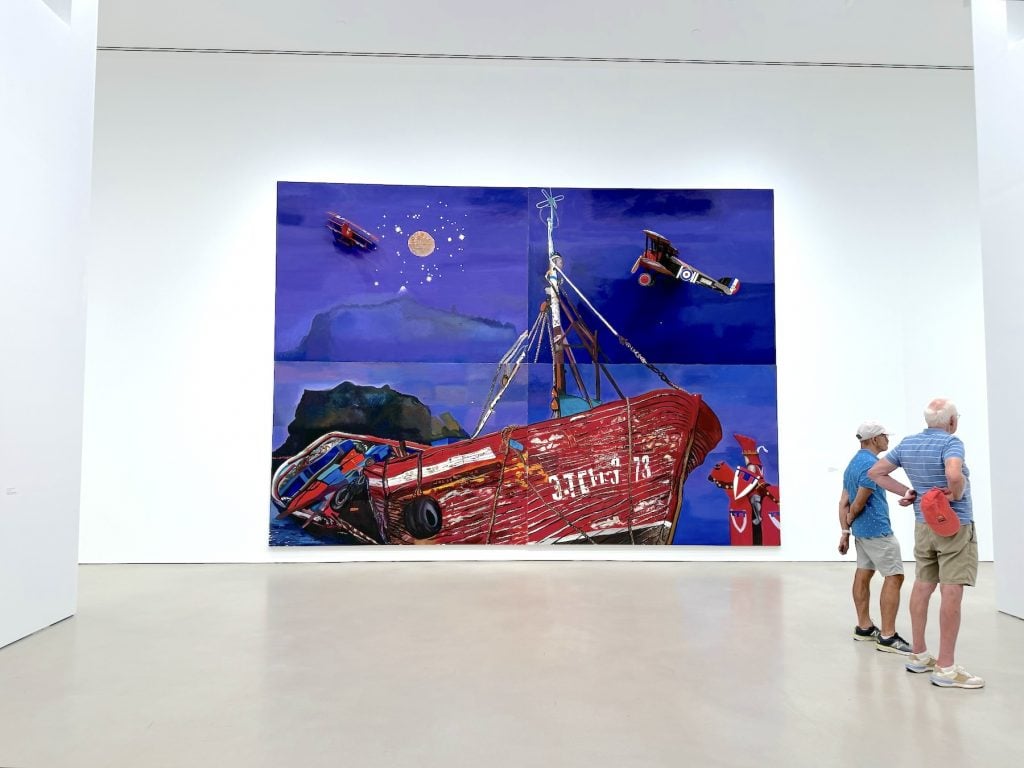
Malcolm Morley, The Oracle (1992) in “Painting as Model” at Petzel. Photo by Ben Davis.
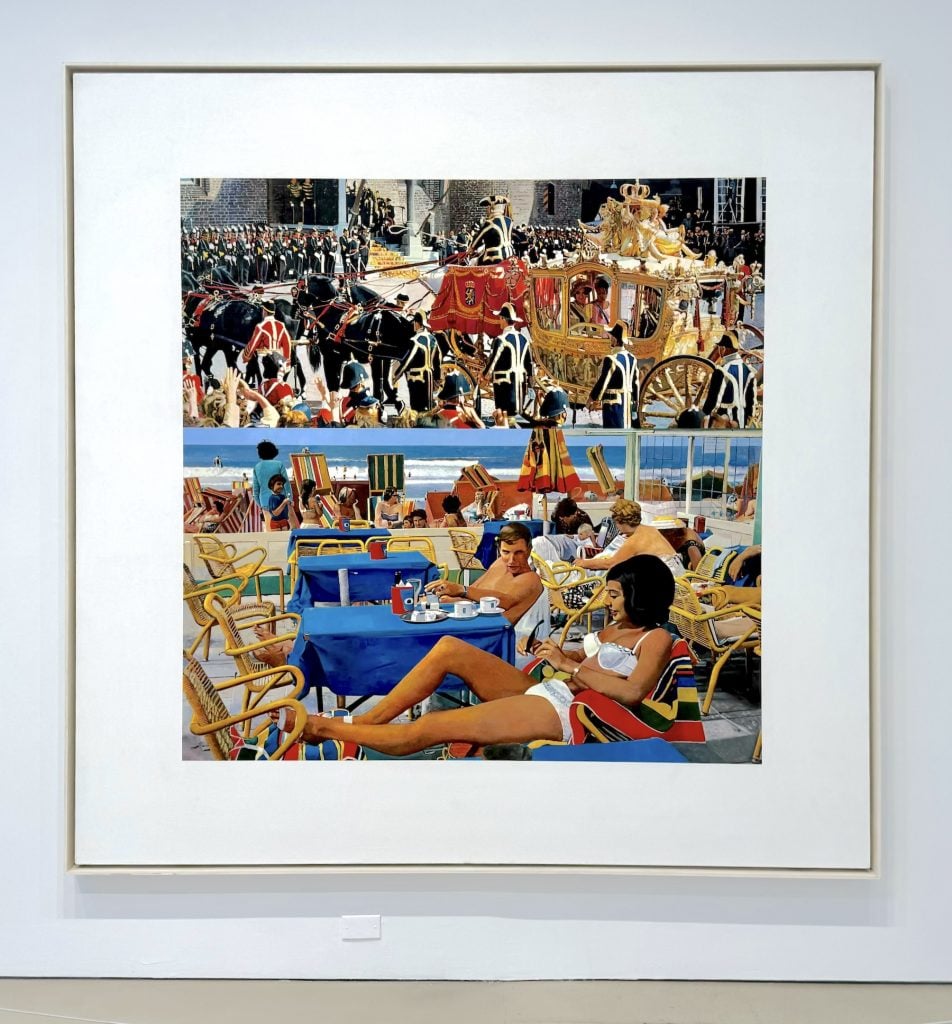
Malcolm Morley, Coronation and Beach Scene (1968). Photo by Ben Davis.
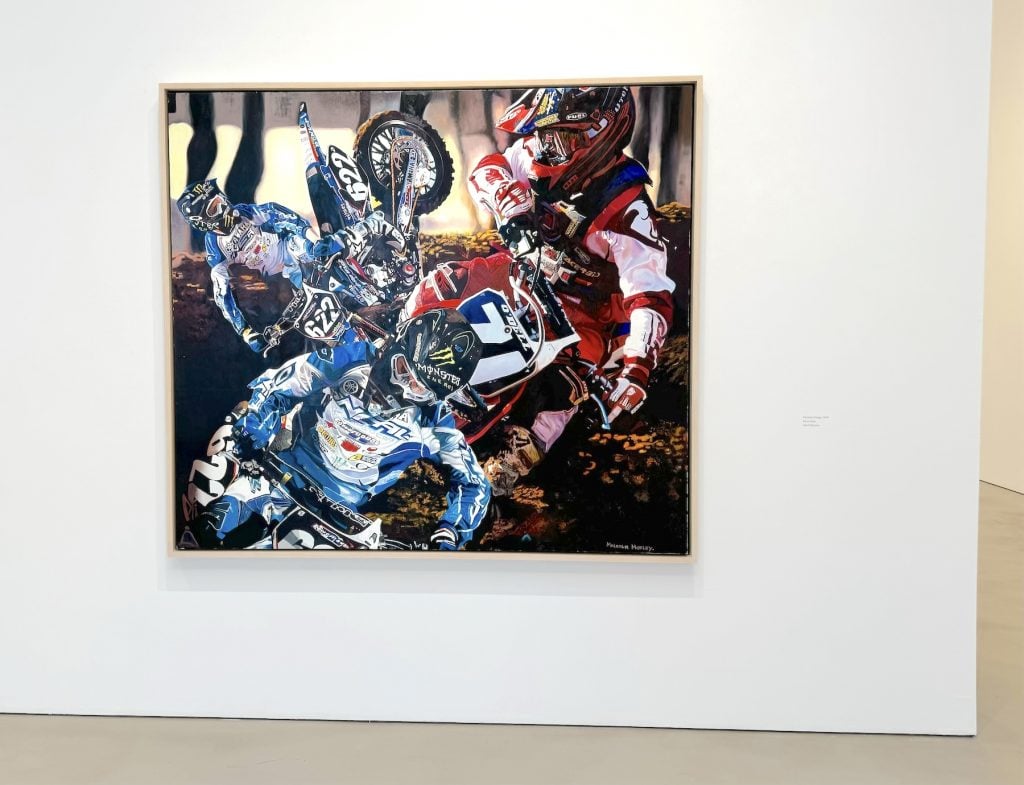
Malcolm Morley, Monster Energy (2007). Photo by Ben Davis.
Paula Wilson, “The Wind Keeps Time” at 55 Walker
Didn’t know Wilson’s work before this, didn’t know what I was getting into, happened into 55 Walker at random—and had the best kind of gallery-walk serendipity. Wilson, who also has a big show on the other side of the country at the California African American Museum, makes works that have this memorable mosaic-like quality, full of intelligent textures and intimate flair. Some of them are made as rugs, but have been stood up as sculpture-paintings. Wilson has also expanded her vision into video form, and I loved taking a seat on the artist-designed sculptural bench (I think I was allowed to sit on the sculptural bench!) in the basement gallery to take it in. Shot in the small New Mexico community Wilson moved to in 2007, the video has a desert-surrealist vibe, showing the artist as a stilt-legged figure being hatched from one of her own artworks and wobbling out into the desert landscape, among other things. The discovery of the summer for me.

Installation view of Paula Wilson, “The Wind Keeps Time” at 55 Walker. Photo by Ben Davis.
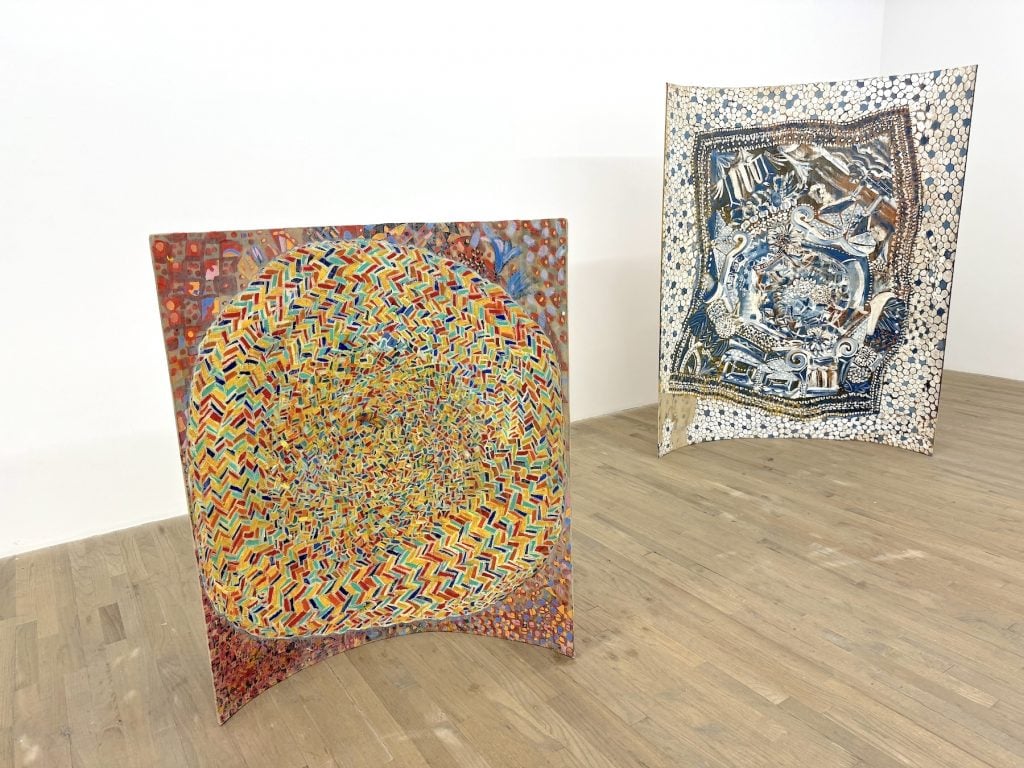
Two works by Paula Wilson in “The Wind Keeps Time.” Photo by Ben Davis.

Video by Paula Wilson installed in “The Wind Keeps TIme.” Photo by Ben Davis.
Hugh Hayden, “Hughmans” at Lisson
A maker of strange objects, Hayden triumphs here as a maker of strange spaces. The big idea is that you come into Lisson and find a room wreathed with bathroom stalls, each of which you can open to enter a booth that serves as a little gallery for a sculptural object, often with a psychosexual or racially coded subtext (or both). Condensations of uncomfortable emotion and thought, these sculptures have a wit and discipline that reminds you of Robert Gober or Fred Wilson. Some, like Hayden’s Pinocchios, verge on cliché fairytale surrealism; many more, like his skeletons whose extremities sprout into shovels and mops, take immemorial symbols and render them freshly unsettling. Above all, the stall-based gallery strategy works, on a bunch of levels—as a display device that makes each sculpture feel like a beat in a mysterious story that you are putting together; as a way to convey a sense of art as a transmission of raw collective feeling, like bathroom graffiti; and as a found-object that brings a kick of psychic energy all its own, public restrooms mingling a sense of exposure and privacy that connects with the unsettled, in-between energy of Hayden’s objects…

Installation view of Hugh Hayden, “Hughmans” at Lisson. Photo by Ben Davis.
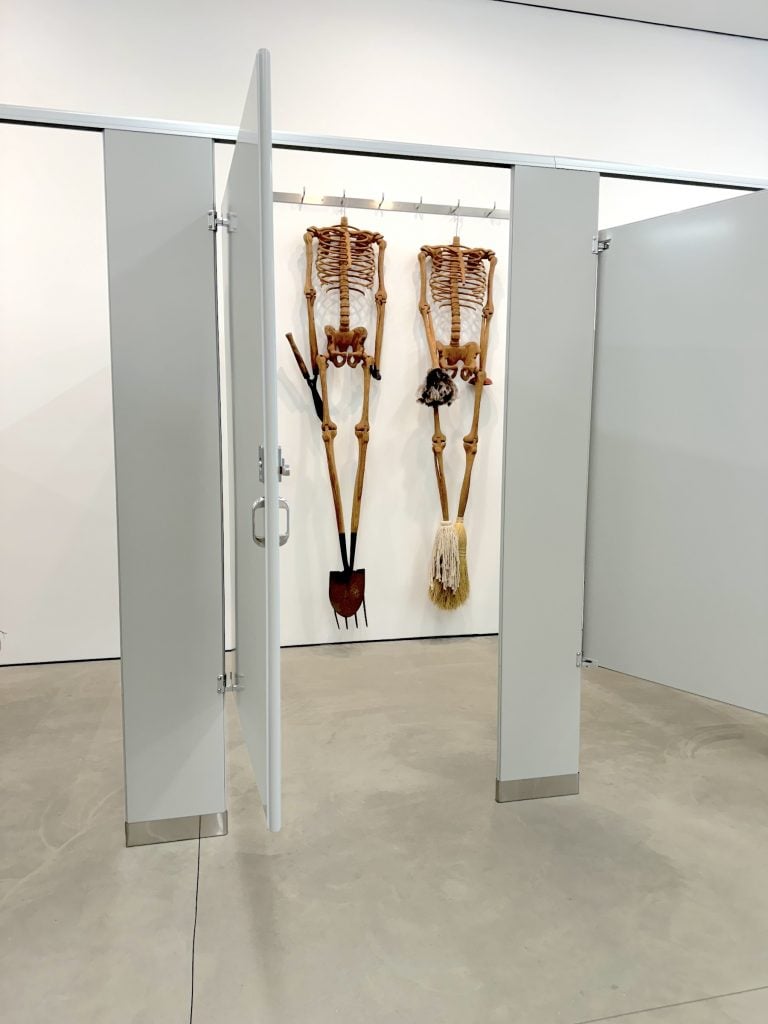
Two sculptures by Hugh Hayden in “Hughmans.” Photo by Ben Davis.
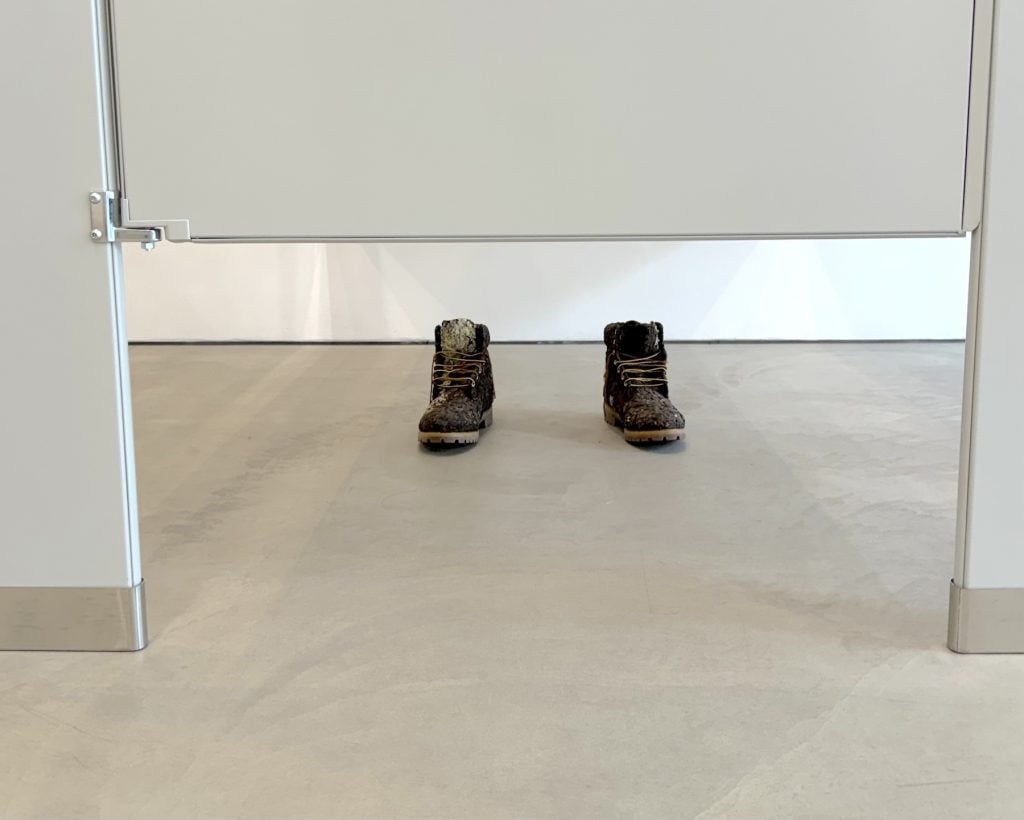
A sculpture by Hugh Hayden. Photo by Ben Davis.
Pacita Abad, “Underwater Wilderness” at Tina Kim Gallery
I’ll be honest: I wasn’t 100 percent sold on Abad when I first saw the late artist’s current retrospective at MoMA PS1. But then I looked at the photos of it on my phone and her vision really snapped together for me. I think this may come down to me thinking that her signature “trapunto” device (painting on stitched and padded textiles) sometimes works against her. In person, the images are full of wrinkles in a way that doesn’t really feel like part of the intended composition to me; photos of them flatten these out so that you see her overall sense of design better. Abad was deliberately working between traditions, between folk textiles and representational painting, so I think you can take the unresolved texture as a symbol of how experimental this was. In any case, the underwater landscapes in this Tina Kim show are as good as anything at PS1. Above all, they are wonders as very specifically observed aquatic scenes from Abad’s native Philippines, while still walking that balance between painting and fabric art.
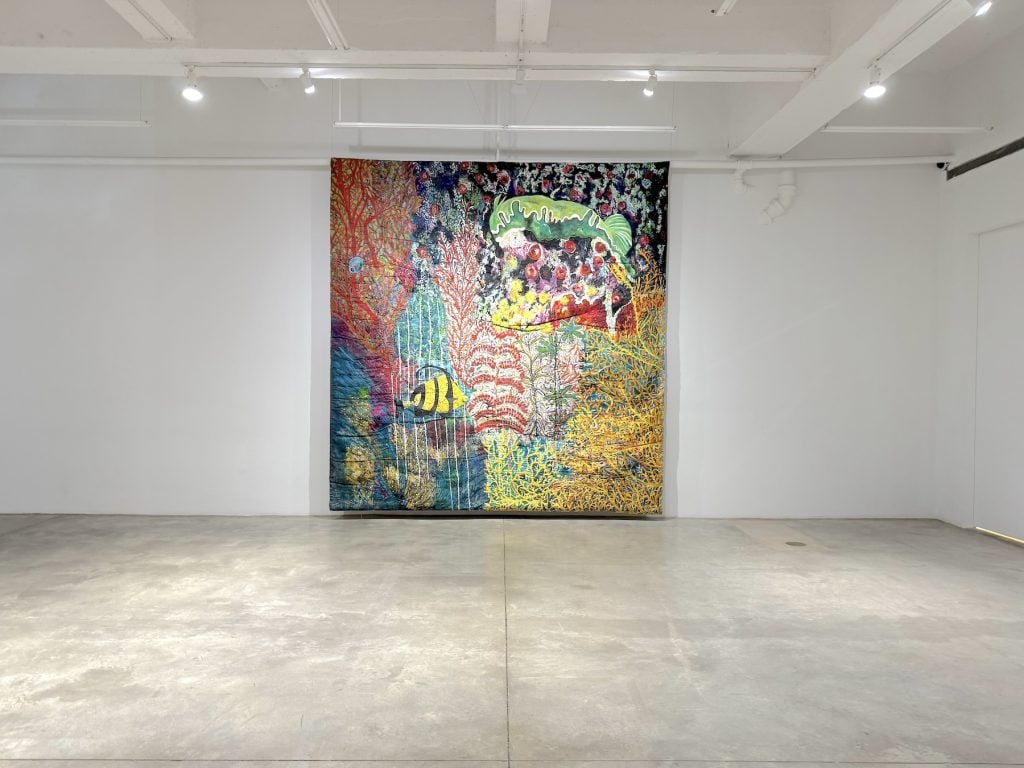
Installation view of Pacita Abad at Tina Kim. Photo by Ben Davis.
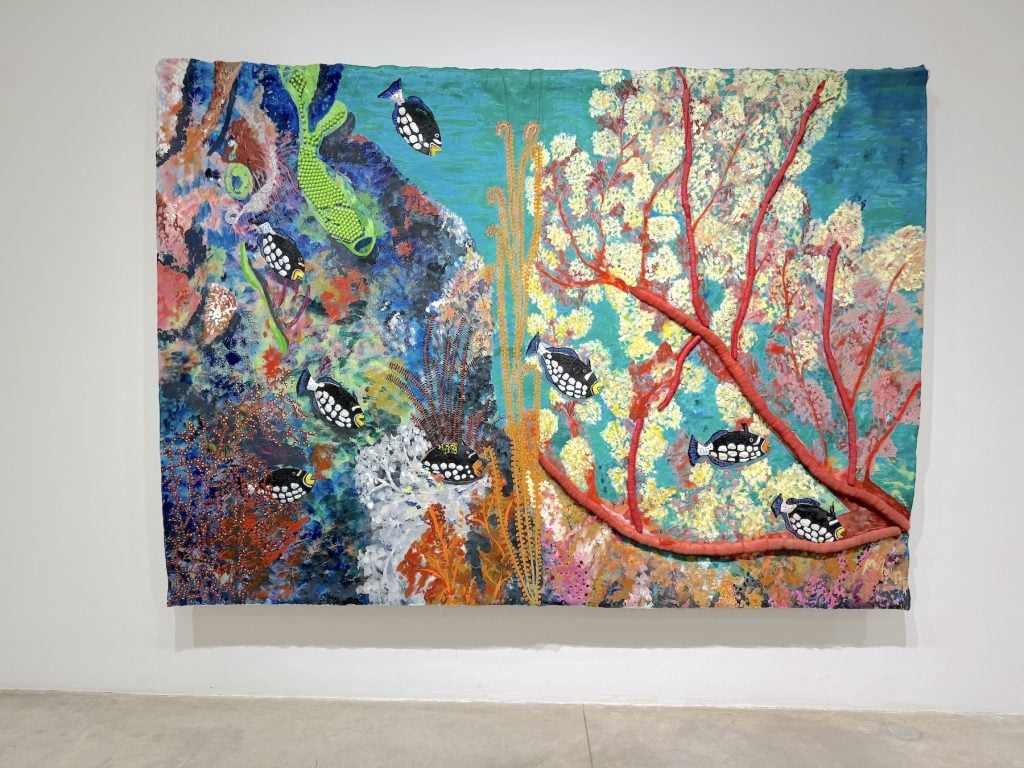
Installation view of Pacita Abad at Tina Kim. Photo by Ben Davis.

Installation view of Pacita Abad at Tina Kim. Photo by Ben Davis.
Joan Linder, “Fulfillment” at Cristin Tierney
The heart of this pleasingly brainy show consists of piles of cardboard Amazon packaging boxes. You don’t have to look too closely to see that these are facsimiles, the boxes’ mailing labels, logos, and stickers meticulously recreated, but also clearly painted by hand. Nearby are long accordion-fold drawings of urban landscapes showing the vast but deliberately unspectacular presence of e-commerce warehouses and server farms near Linder’s home in Buffalo, N.Y. In format, the drawings are inspired by Ed Ruscha’s famous photo books like Every Building on the Sunset Strip, but where Ruscha’s photos convey affectless pop cool, Linder puts the emphasis on drawing created over time and through direct observation. “Fulfillment” is very specifically about the dark matter of digital life, the IRL infrastructure that the promise of immaterial and frictionless culture is meant to make you forget. The artist’s emphasis on the handmade is about making these homely bits of infrastructure strange enough to see, but also about feeling the weight of their sheer proliferating mass by measuring it against the efforts of a human body.
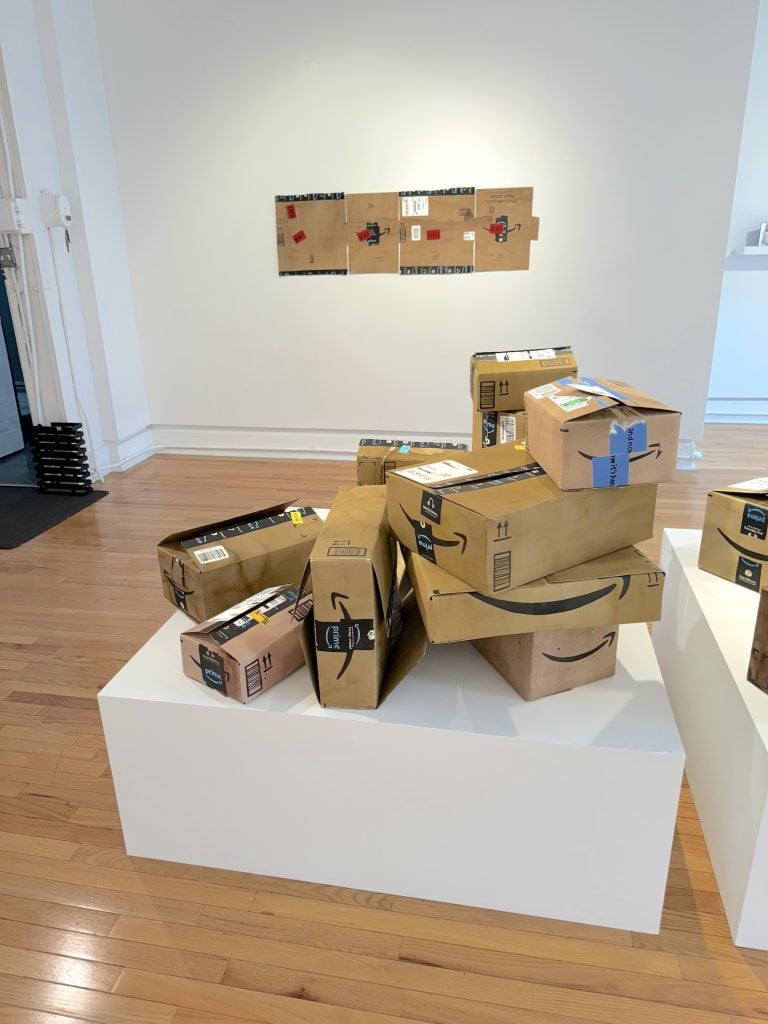
Installation view of Joan Linder, “Fulfillment” at Cristin Tierney. Photo by Ben Davis.
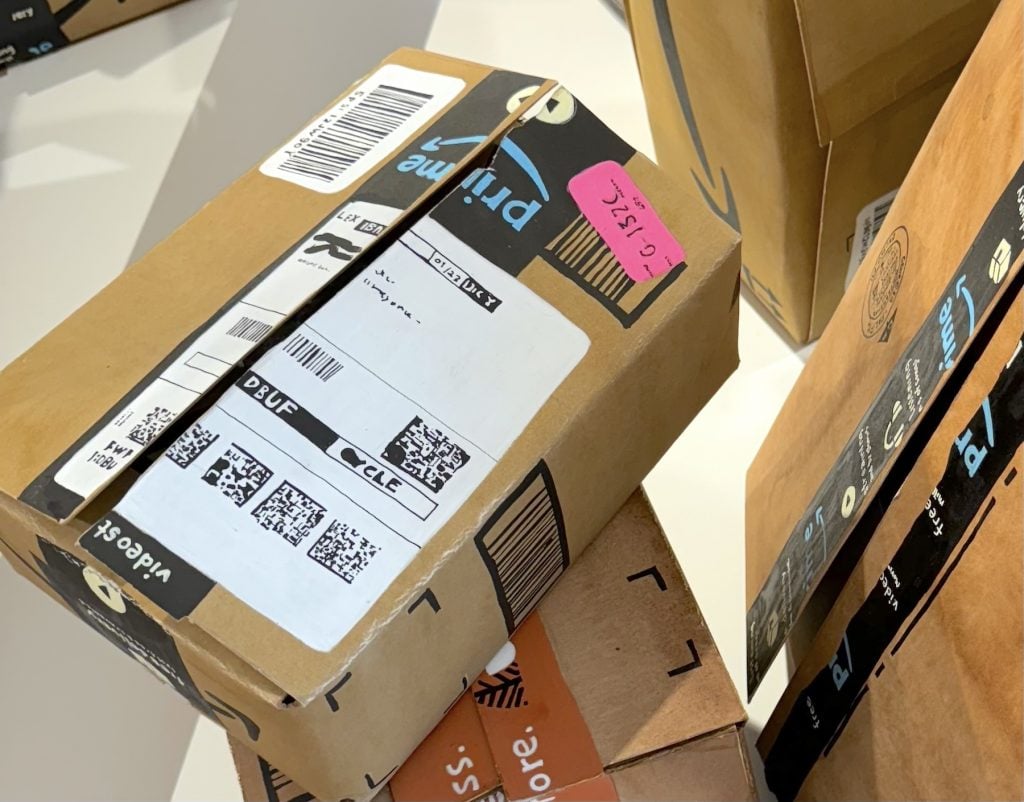
Detail of Joan Linder, “Fulfillment” at Cristin Tierney. Photo by Ben Davis.
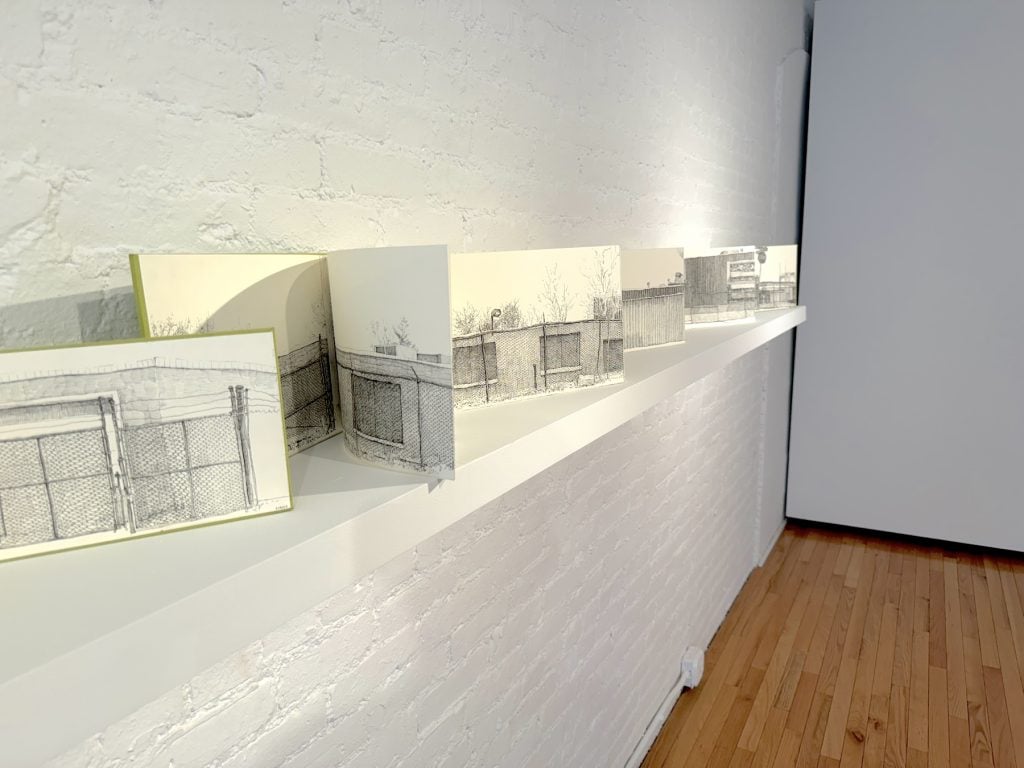
Installation view of Joan Linder, “Fulfillment” at Cristin Tierney. Photo by Ben Davis.
Borna Sammak at Tennis Elbow @ The Journal
It sure looks like people are having a lot of aimless, arty fun in these photos of the cool-kid New York art scene. Maybe a very insider pleasure because of its spot-the-scenester quality, but also kind of heartening, in that they show that despite all the complaints of the “New York is dead” and “culture is stagnant” sort, it doesn’t take too much for the very recent past to assume the form of a beautiful, lost, you-had-to-be-there bohemia (though just moving from digital photo screens to printed-out snapshots does a lot of this all by itself).
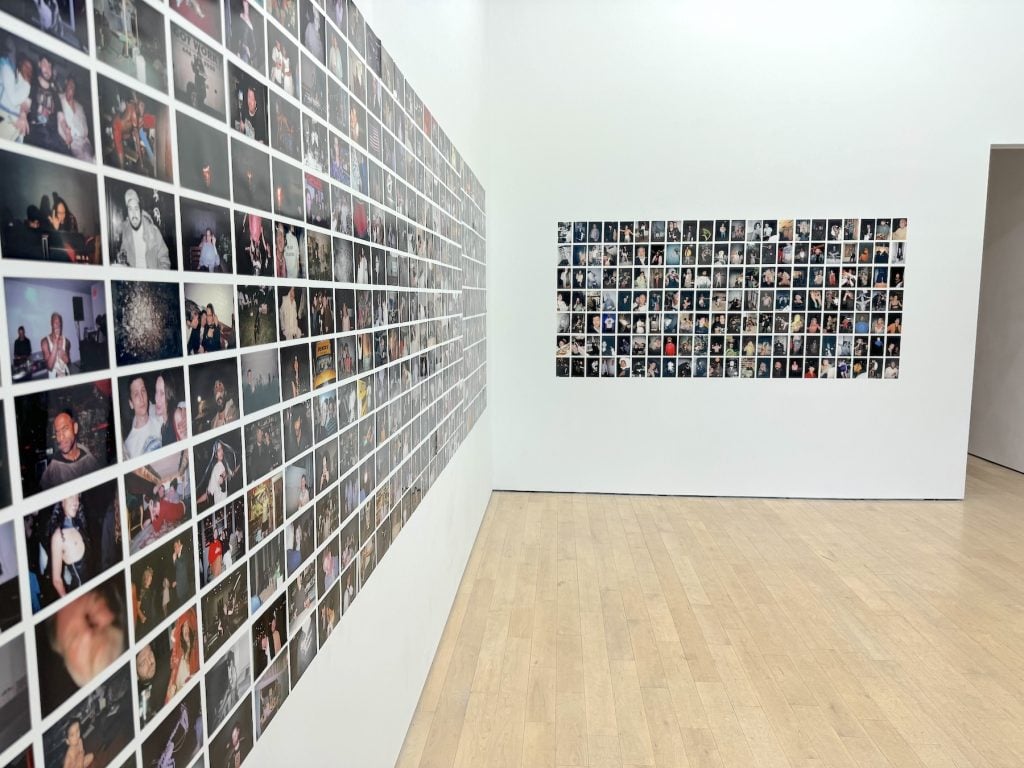
Borna Sammak’s photos at Tennis Elbow. Photo by Ben Davis.
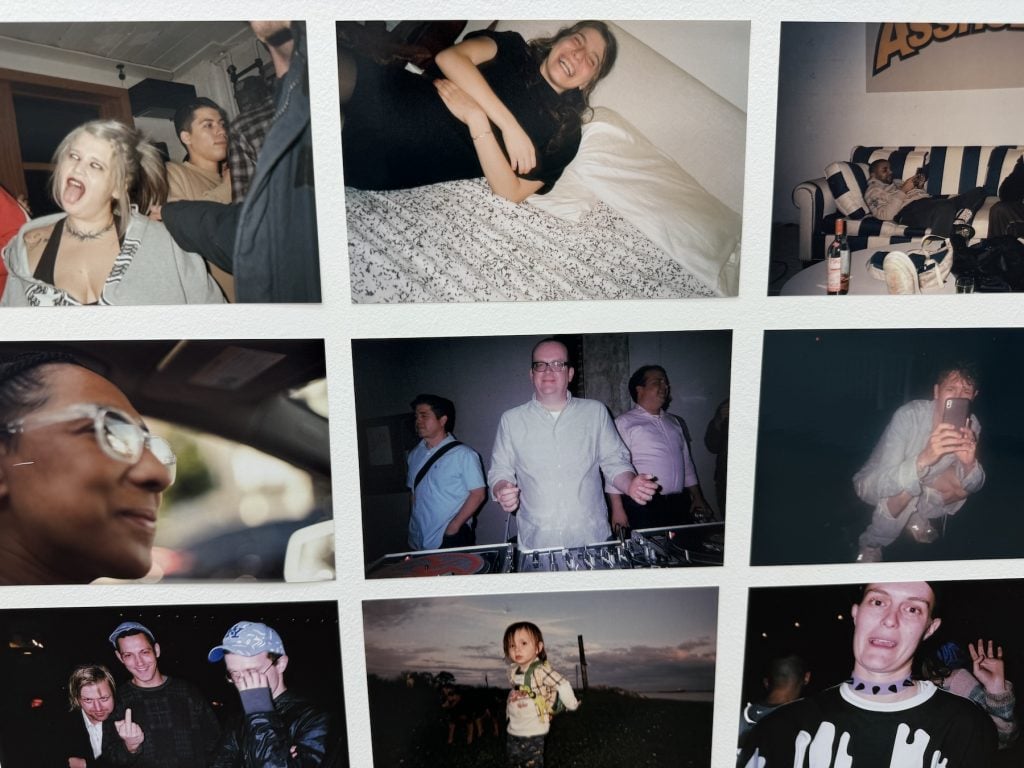
Detail of installation of Borna Sammak photos. Photo by Ben Davis.
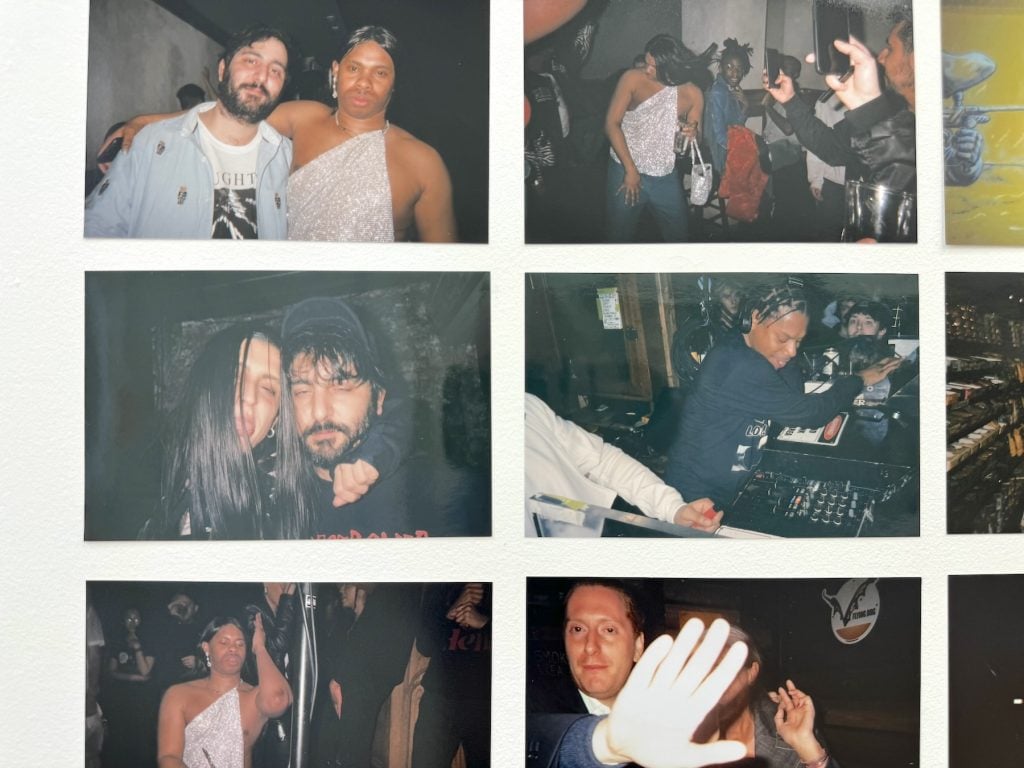
Detail of installation of Borna Sammak photos. Photo by Ben Davis.
Bonus: Nicholas Roerich Museum
On a sweaty summer Sunday afternoon, I finally made the trip up the West Side to see this gem of an institution. I’ve been meaning to since I wrote about Agnes Pelton, the mystical painter who was very influenced by the mystical doctrines of “Agni Yoga” cooked up by Roerich and his wife, the medium Helena Roerich. He’s a fascinating freak-to-know from art history who both helped create a treaty to defend cultural heritage in time of war (the “Roerich Pact“) and also helped bring down FDR’s vice president Henry Wallace. Here you can get to know his mystical paintings of crystal-filled caverns, mystical entities, romantic landscapes from his adventures in the Himalayas, and more. Delightful, and free to enter.
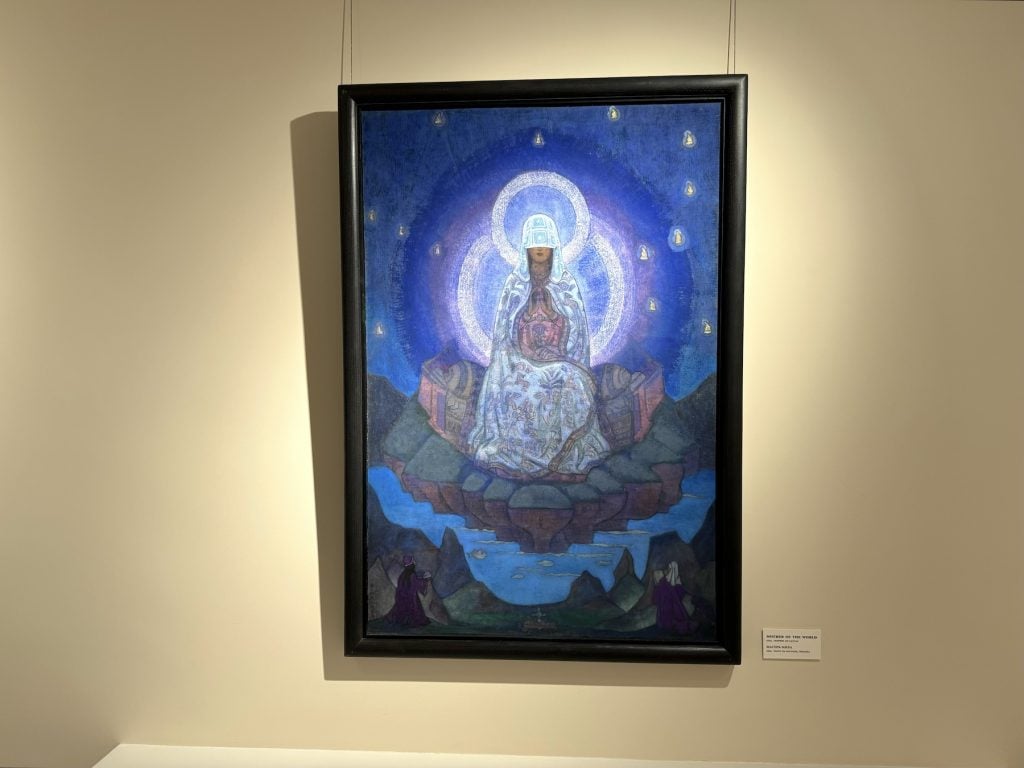
Nicholas Roerich, Mother of the World (1924). Photo by Ben Davis
Double Bonus: Gotham Roller Derby
The Olympics are fine, but this is much more my speed. I heard the always-insightful Nation sportswriter Dave Zirin tell a crowd that they should check out Gotham Roller Derby if they wanted to see what sports could be if you got a lot of the commercial junk out of the way and really focused on a community of fans. Now I’ve finally been and I can tell you he’s right. Genuinely worth supporting. Come for the feats of skating, stay for the good vibes.
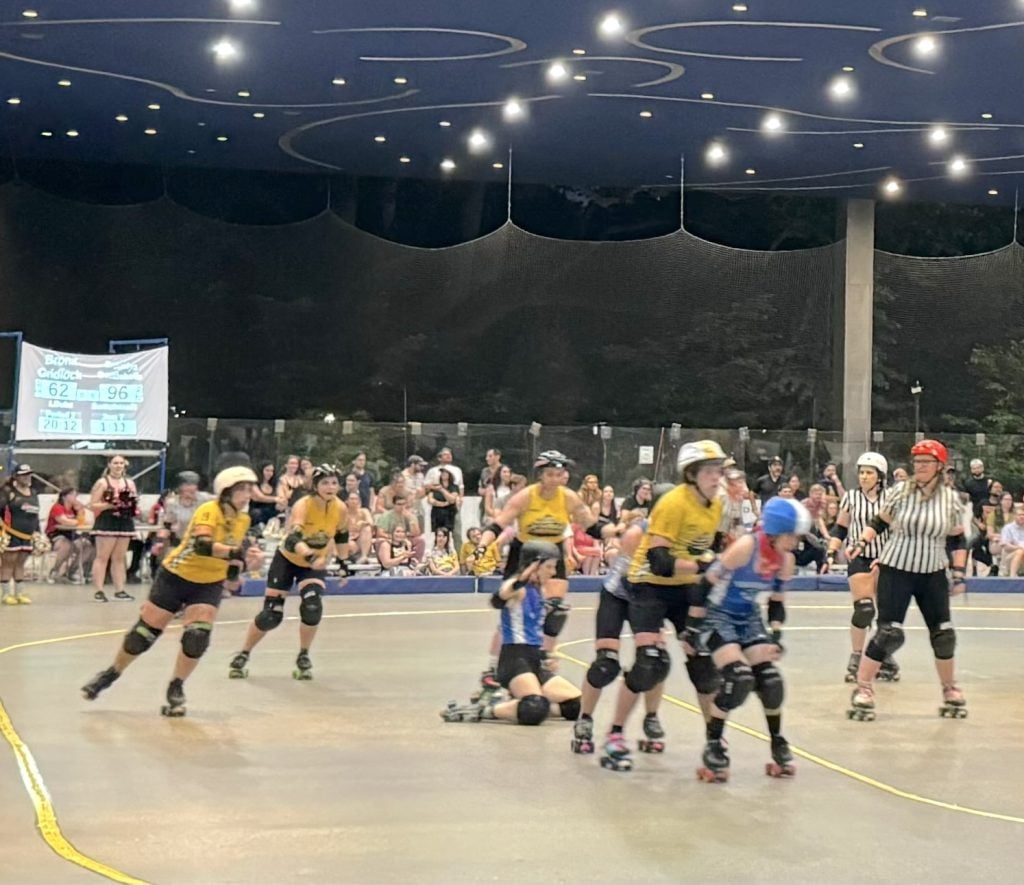
Gotham Roller Derby, as the Brooklyn Bombshells duel it out with the Bronx Gridlock.